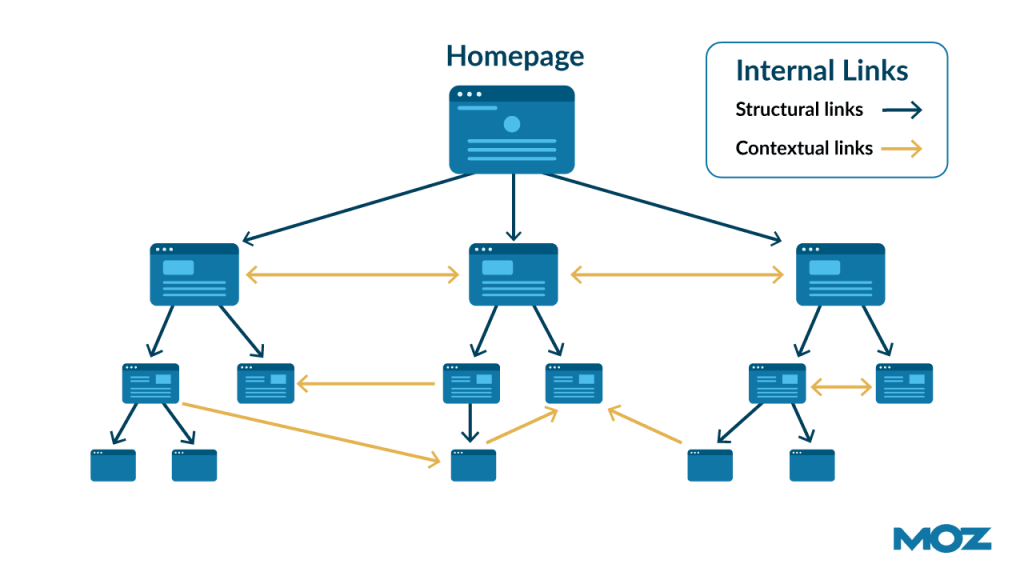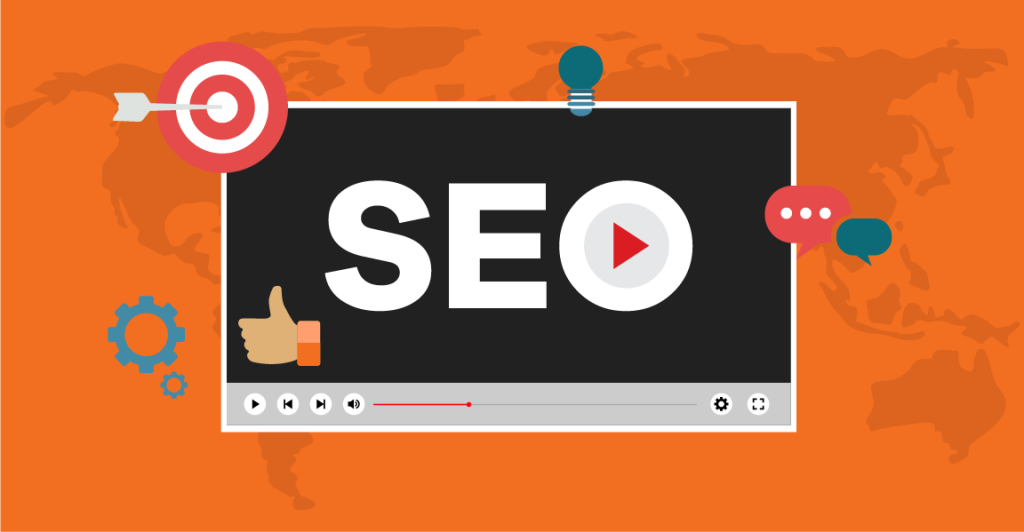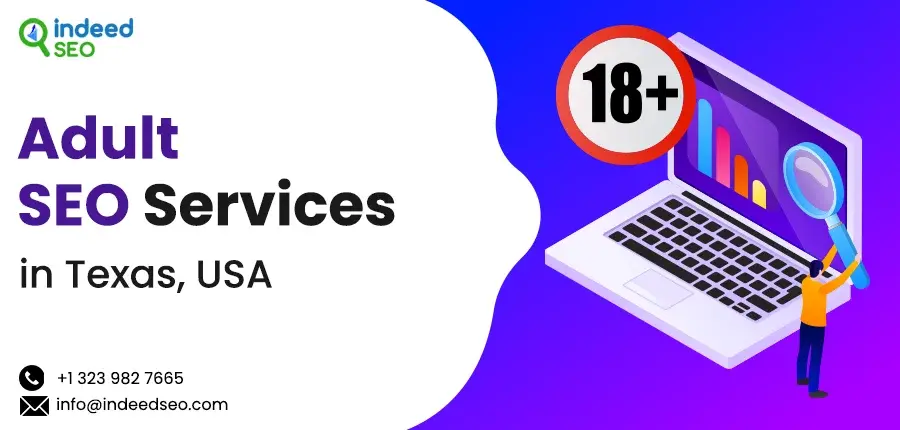Internal linking boosts SEO by spreading link equity and enhancing site navigation. It encourages search engines and users to discover content more efficiently.
Crafting a web of internal links within your website acts like a roadmap for both search engine crawlers and visitors, guiding them to relevant pages and ensuring they spend more time engaging with your content. This strategy not only improves the user experience by providing them with more information but also signals to search engines the hierarchy and the importance of your pages.
By strategically using internal links, you can highlight the most critical pages, thereby increasing their visibility and ranking potential. An effectively implemented internal linking structure can significantly impact your site’s SEO performance, making it an essential element of your optimization efforts. Remember, the goal is to link contextually relevant pages to pass authority and guide users smoothly through your website, enhancing both their experience and your site’s SEO.
The Importance Of Internal Linking In Seo
The Importance of Internal Linking in SEO cannot be overstated. Internal links connect your website’s pages. They guide users and search engines through your site. This boosts SEO by showing which pages are most important.
How Internal Links Affect User Experience
Internal links make your website easy to navigate. They help users find what they need without frustration. A well-linked site keeps visitors longer, reducing bounce rates. This signals search engines that your site is valuable, improving your rankings.
- Better navigation: Users find pages quickly.
- Increased engagement: Visitors explore more pages.
- Lower bounce rates: People stay on your site longer.
Internal Links And Search Engine Crawling
Search engines use links to discover content. Internal links help search engines understand your site structure. They indicate which pages are related and which are most important. This helps your pages rank better in search results.
| Benefit | Description |
|---|---|
| Better crawling: | Search engines find and index pages faster. |
| Improved indexing: | More of your pages appear in search results. |
| Higher rankings: | Important pages get a boost in search results. |
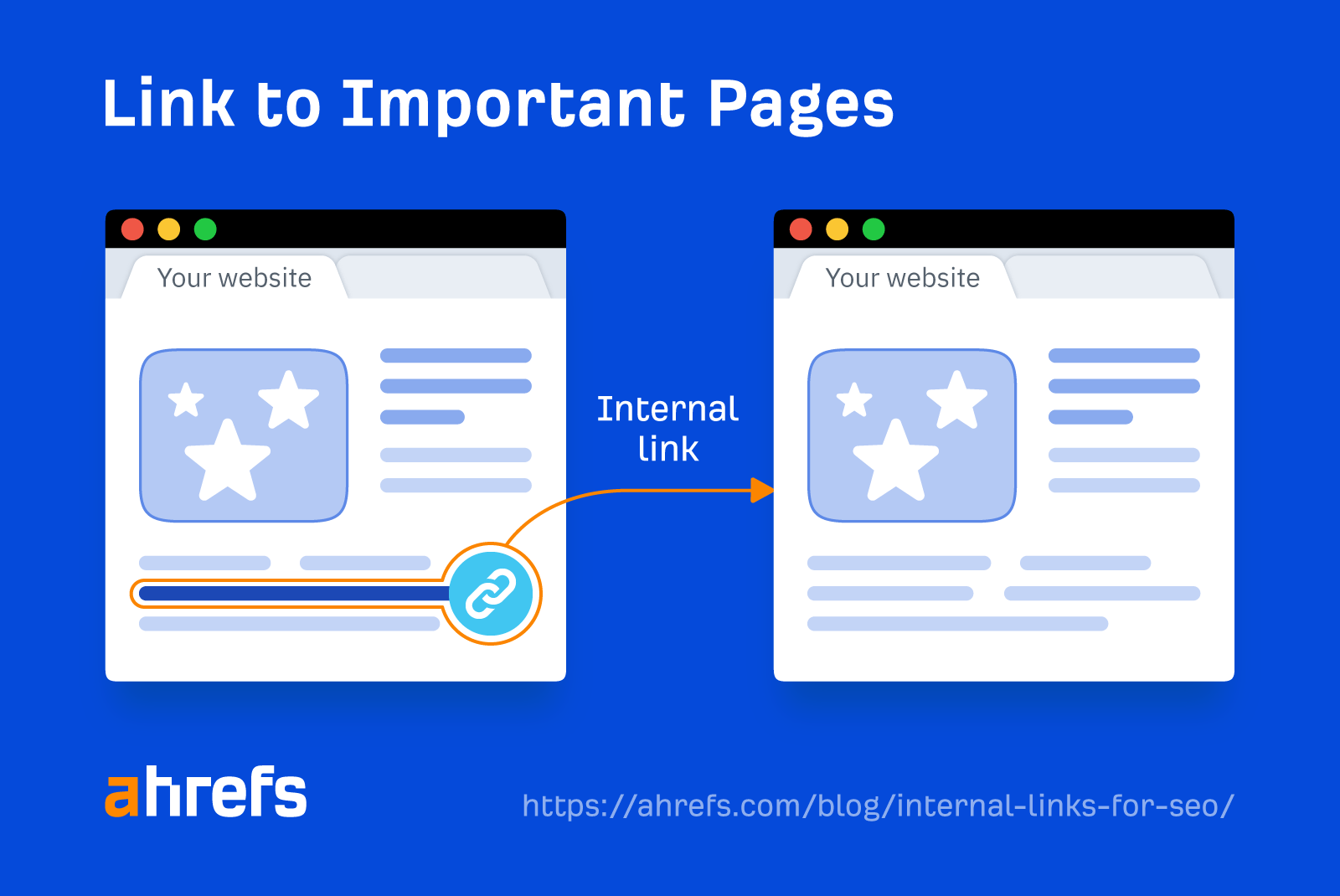
Credit: ahrefs.com
Internal Linking Basics
Internal linking forms the backbone of a well-structured website. It helps users navigate and search engines understand site architecture. Let’s dive into the essentials of internal links.
Defining Internal Links
Internal links connect different pages within the same domain. They guide users and search engines to relevant content. This boosts SEO by showing the value and relationship between pages.
Types Of Internal Links
Different internal links serve varied purposes. Here’s a quick overview:
- Navigational links: These form the main menu and help users move around a site.
- Footer links: Often include privacy policies or contact info.
- Content links: Found within articles, leading to related topics.
Each type plays a role in keeping visitors engaged and spreading link equity.
Strategic Placement Of Internal Links
Internal links guide users and search engines through a website. Strategic placement boosts SEO significantly. It creates pathways for search engines to understand content hierarchies. A well-structured internal linking strategy can enhance user experience and site authority.
Contextual Internal Links
Contextual links are within page content. They point to related information. These links offer depth and detail where readers need it. Contextual links are key for SEO as they show content relationships. They aid in building a cohesive website structure.
Use bold keywords to highlight important concepts. Create links on these words to relevant pages. This method helps search engines identify topic clusters. It also increases page views and reduces bounce rates.
Navigational Links And Their Role
Navigational links aid in website exploration. They are often found in menus, footers, or sidebars. Their role is to link to main pages like ‘Home’, ‘About Us’, or ‘Contact’. Navigational links ensure users find what they need with ease.
Include links to your top pages in clear, visible locations. This improves user navigation and distributes page authority throughout the site. Use descriptive anchor texts for these links to enhance SEO value.
Optimizing Anchor Text For Internal Links
When we talk about SEO, internal linking is a key player. It helps search engines understand and rank pages. The anchor text of these links is crucial. It tells search engines what the page is about. Now, let’s dive into how to optimize this anchor text.
Best Practices For Anchor Text
- Use descriptive keywords that give users and search engines a clear idea of the page content.
- Vary anchor text for different links to the same page. This avoids repetitiveness.
- Anchor text should fit naturally within the content. It should not feel forced or out of place.
- Include both exact-match and partial-match anchor texts. This approach helps avoid over-optimization.
Avoiding Over-optimization
Too much of a good thing can hurt your SEO. Here’s how to avoid over-optimizing anchor text:
- Don’t stuff keywords into your anchor text. Keep it relevant and varied.
- Avoid using the same text for multiple links. This can trigger spam filters.
- Use synonyms and LSI keywords to diversify your anchor text.
- Remember, the goal is to enhance user experience. Make sure your anchor text is helpful for readers.
Improving Site Structure With Internal Linking
Improving Site Structure with Internal Linking is a key SEO strategy. It makes websites easier to navigate. Users and search engines benefit from it. A well-linked site lets search engines crawl and index pages efficiently. Let’s explore how to enhance your site structure.
Creating A Logical Hierarchy
Every website needs a clear structure. It guides visitors to important pages. Internal linking creates this structure. Start with the homepage. Link to main categories. From there, link to subcategories and individual pages. This hierarchy helps users find what they need.
Using Internal Links To Define Content Silos
Content silos organize topics on your site. They group related content together. Use internal links to connect these groups. This shows search engines the content’s relevance. It also makes your site a subject matter authority. Here’s how to build silos:
- Identify main themes for your site.
- Group related pages under these themes.
- Link pages within the same silo.
Keep links relevant and useful. Users will stay longer. Search engines will rank your site higher.
Internal Links And Page Authority
Internal Links and Page Authority play a big role in SEO. They help websites tell search engines which pages are important. This can make your site show up higher in search results.
Distributing Pagerank Within Your Site
Think of your website as a tree. The homepage is the trunk, and the branches are the pages. Internal links are like the roots that spread water (or PageRank) from the trunk to the branches. This helps the whole tree grow strong.
- Links from high-authority pages spread more “juice”.
- Use links to connect related topics.
- Helps search engines understand your site structure.
Boosting Low-performing Pages
Some pages on your site might not get much traffic. You can help these pages by linking to them from your popular pages.
- Identify pages with low traffic but good content.
- Add links from your high-traffic pages.
- Watch as these pages start getting more visitors.
This strategy spreads PageRank, boosting your site’s overall performance. Remember, a strong tree has both a sturdy trunk and healthy branches.
Internal Linking And Mobile Seo
Internal linking shapes the backbone of mobile SEO strategies. It guides users and search engines through a site’s content. Internal links connect pages, enhancing user experience and SEO on mobile devices. Well-structured internal linking boosts site navigation and indexing, crucial for mobile SEO.
Responsive Design And Link Placement
Responsive design ensures a seamless mobile experience. It adapts a site’s layout to various screen sizes. This design approach affects internal linking. Links must be easy to tap on mobile. They must stand out and be spaced well.
Link placement matters in responsive design. Main links appear in easy-to-reach areas. Users navigate without zooming or excessive scrolling. This keeps them engaged and reduces bounce rates.
The Impact Of User Behavior On Mobile
User behavior on mobile devices is unique. Users expect quick, accessible content. Internal links must lead to relevant pages. This satisfies users and prompts them to explore more.
Engagement metrics like click-through rate (CTR) influence SEO. High engagement means users find content useful. This signals search engines that a site is valuable. Internal linking can improve these metrics. It makes key content accessible with fewer taps.
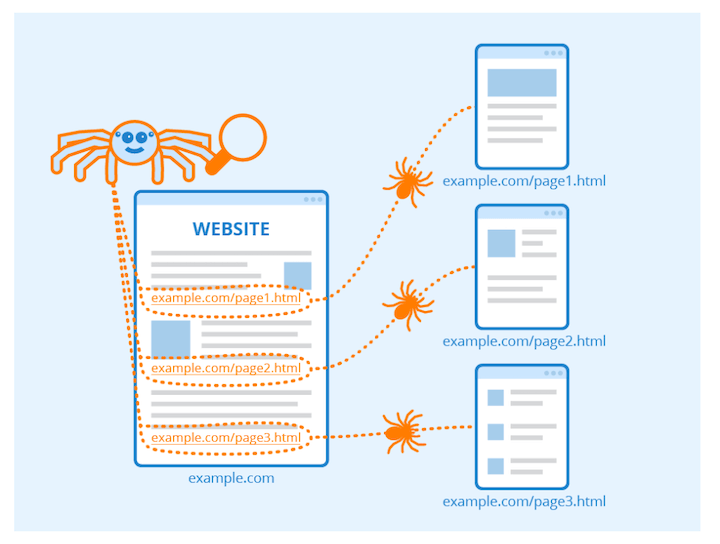
Credit: www.wordstream.com
Monitoring And Maintaining Internal Link Health
Monitoring and maintaining internal link health is crucial for SEO success. It ensures visitors and search engines navigate your site effectively. Regular checks keep your link structure strong and your content interconnected. Let’s dive into how you can audit and optimize your site’s internal linking.
Tools For Auditing Internal Links
Several tools can help you audit internal links. They detect issues and improve your site’s SEO structure.
- Screaming Frog SEO Spider: Crawls your website, finding link errors.
- Ahrefs: Provides a site audit feature to analyze internal links.
- Google Search Console: Highlights broken links and crawl errors.
- SEMrush: Offers a site audit tool to check for link issues.
Fixing Broken Links And Redirects
Fixing broken links is vital for a healthy website. Redirects ensure users find what they need.
- Identify broken links using the tools mentioned above.
- Update or remove dead links to relevant content.
- Implement 301 redirects for moved pages.
- Recheck your site to confirm fixes.
Advanced Internal Linking Strategies
Internal linking shapes a website’s SEO power. Advanced strategies can improve site structure and content relevance. Let’s dive into these tactics.
Leveraging Internal Links For Content Clusters
Content clusters link related articles using internal links. This approach signals search engines about the main topic. The main page, known as the pillar page, covers a broad topic. Cluster pages delve into subtopics. Here’s how to leverage this strategy:
- Identify the pillar content. Make it comprehensive.
- Create cluster content. Ensure depth and relevance.
- Link cluster pages back to the pillar page.
- Use descriptive anchor texts for clarity.
- Monitor and update links regularly.
Using Internal Links To Enhance Featured Snippets
Featured snippets grab attention in search results. Internal links can boost a page’s chance to earn this spot. Follow these steps:
- Analyze current featured snippets for your target keywords.
- Optimize your content to answer specific questions.
- Include internal links from high-authority pages.
- Use ordered or unordered lists to structure answers.
- Format headings and subheadings correctly.
These advanced internal linking strategies can lift your SEO. Start applying them for a stronger website architecture.
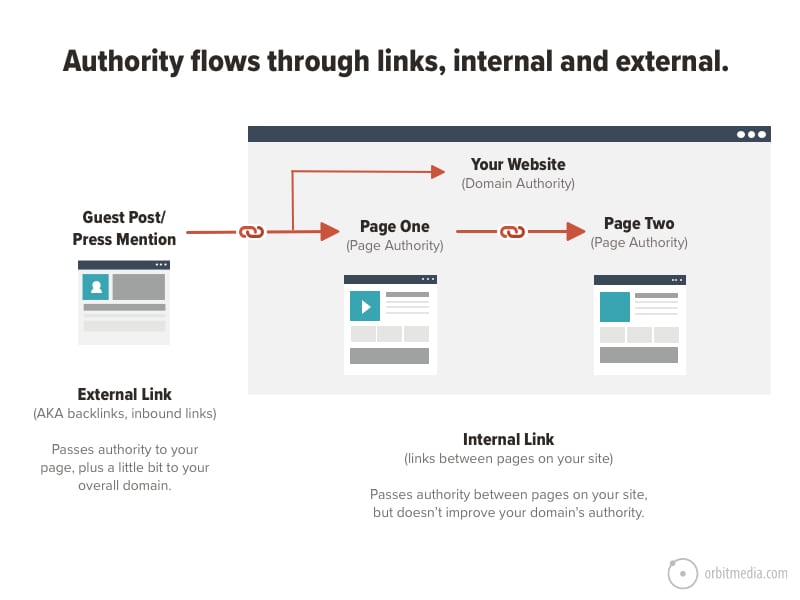
Credit: www.orbitmedia.com
Common Mistakes To Avoid In Internal Linking
Internal linking is a key SEO strategy. It guides visitors and search engine crawlers through a website. It boosts page authority and improves user experience. Yet, some practices can harm your SEO efforts.
Overuse Of Exact Match Anchor Text
Using the same anchor text repeatedly can signal spam to search engines. Mix it up with synonyms and variations. Ensure anchor texts are relevant and provide context.
Neglecting Link Equity Distribution
Each page has a value, known as link equity. This value can pass from one page to another through internal links. Ensure high-value pages link to important, but less visited, pages. This practice spreads value throughout the site.
Remember: Balance and relevance are key in internal linking. Aim for a natural flow that benefits the user.
Frequently Asked Questions
What Does Internal Linking Do For Seo?
Internal linking boosts SEO by guiding search engines and users through your site. It enhances site structure, improves page authority, and increases pageviews, aiding in higher rankings. Proper use of anchor texts within links also helps in better keyword optimization.
Does Internal Linking Boost Seo?
Yes, internal linking significantly boosts SEO. It helps search engines understand and index your site’s structure. By linking relevant content, you enhance user experience and distribute page authority across your website, which can improve your site’s ranking.
Does Linking Improve Seo?
Yes, linking can enhance SEO by boosting site authority and connecting relevant content, which search engines favor.
Why Are Links Important In Seo?
Links boost SEO by demonstrating a page’s value, relevance, and credibility to search engines, which can improve its ranking.
Conclusion
Harnessing the power of internal linking can significantly boost your SEO efforts. By creating a network of links within your site, you guide users and search engines through your content, enhancing user experience and site authority. Remember, a strategic approach to internal linking can lead to better indexing, increased page views, and improved rankings.
Make it a staple in your SEO toolkit for a well-structured, high-performing website.
